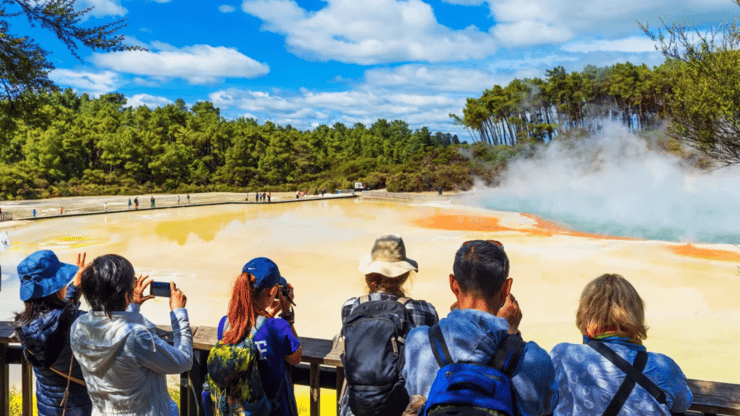Fee Hike, Visa Rejections Threaten Tourism

The New Zealand government's decision to increase the International Visitor Levy (IVL) from $35 to $100 starting next month is undoubtedly a subject of much debate. The rationale for the increase appears sound: the levy will help maintain New Zealand’s regional infrastructure and conservation areas, offsetting the costs that come with the heavy influx of tourists.
However, there are legitimate concerns about the broader implications of this policy, both for the tourism industry and for visitors, particularly from countries like India, where visa rejection rates seem disproportionately high. Tourism is a significant contributor to New Zealand’s economy, generating over $11 billion annually.
The government argues that the increased levy will support the very infrastructure that enables such high tourist numbers by investing in conservation and tourism-related projects. The promise is that the additional funds will not only maintain but enhance the tourist experience, justifying the higher cost of entry. In theory, this sounds reasonable, but there are several issues that must be considered.
First, while the government has claimed that the levy increase will not deter visitors, industry experts and stakeholders are not as confident. They warn that such a steep rise in fees could make New Zealand less competitive compared to other tourist destinations.
A significant portion of travellers budget carefully for their trips, and additional costs—no matter how relatively small compared to the overall expense—can be off-putting. For instance, a family of four would now have to pay $400 just to enter New Zealand, before even accounting for flights, accommodation, and other expenses. This could very well push potential visitors to more affordable alternatives. New Zealand’s tourism industry has yet to fully recover from the pandemic, and some sectors are still struggling with reduced international arrivals. By increasing the IVL, the government risks alienating travellers at a time when the industry is aiming to regain momentum.
There’s a risk that New Zealand could be seen as an exclusive, high-cost destination—appealing only to wealthy tourists and putting off budget travellers, who also make significant contributions to the economy through longer stays and spending in local businesses. Beyond the financial impact, the policy raises deeper questions about New Zealand’s approach to immigration, particularly when it comes to tourists from countries deemed “high-risk.”
While levies and fees can be seen as a necessary evil to support infrastructure, they become problematic when coupled with systemic issues in visa approval processes. Applicants from certain countries, including India, are often subject to more stringent scrutiny, resulting in a disproportionately high rate of rejections. Many Indian tourists, for example, face challenges in obtaining visas despite submitting detailed applications with ample documentation.
This raises questions about the transparency and fairness of the visa process. Genuine tourists with no intention of overstaying are often caught in the crossfire of strict immigration policies designed to prevent fraud and illegal stays. However, it’s crucial to strike a balance between safeguarding national security and allowing legitimate visitors to experience New Zealand’s beauty.
India is one of the fastest-growing sources of international tourists, and there is a strong appetite among Indians to explore New Zealand, whether for its scenic landscapes, adventure tourism, or to visit family members already living in the country. However, reports of widespread visa rejections, especially among single applicants or those from specific regions, paint a troubling picture.
It suggests that there is more work to be done to streamline the visa application process for tourists from countries like India. A more efficient and transparent system would benefit both the tourists and New Zealand’s economy, ensuring that genuine visitors are not unfairly barred from entry.
It’s also worth noting the economic opportunity lost with each visa rejection. Every tourist who does not make it to New Zealand due to visa difficulties is one less contributor to the tourism economy. When businesses across the country are crying out for more tourists, it seems counterproductive to maintain overly rigid screening processes that turn away genuine visitors.
To ensure the success of policies like the IVL increase, the government must also address these systemic issues in the immigration process. A holistic approach that not only increases revenue through levies but also improves the ease with which genuine tourists can visit the country would be more beneficial in the long term. Streamlining visa approvals, particularly for countries with high rejection rates, could go a long way in boosting tourist numbers, ensuring that the new levy does not inadvertently harm the industry it’s supposed to support.
While the increased IVL may generate more funds for conservation and tourism, it must be accompanied by reforms in immigration procedures to prevent visa rejections from undermining the potential growth of New Zealand’s tourism industry.




